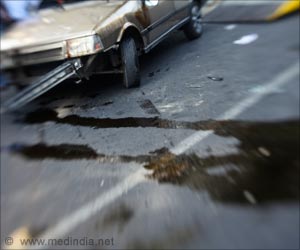E-scooter injuries have increased dramatically since their introduction, with a 5-fold rise in cases from 2018 to 2023.

‘Accidents in Denver are peaking at night and on weekends because of e-scooters. #EV #accidents #publicsafety #medindia’





Advertisement
Prevalence of E-Scooter Accidents During Nights and Weekends
In July 2018, Denver launched a Dockless Mobility Program, which provides e-scooters for public use. A study at Denver Health Medical Center, published in 2022 in the Journal of the American Academy of Orthopaedic Surgeons, determined that in the first 18 months after introduction of publicly shared scooters, 197 patients came to Denver Health with associated injuries, compared with 23 patients who came there with e-scooter injuries between August 1, 2016 and February 1, 2018. The need for hospital admissions increased from 11% of injured patients to 62%(1✔ ✔Trusted SourceElectric Scooter–related Injuries Are Becoming More Frequent and Costly in Denver, CO
Go to source).
In the new study in CORR, the same research team looked back to see how many people of any age came to Denver Health with e-scooter injuries between January 1, 2020, and November 1, 2023. They identified 2,424 patients: 273 injured in 2020, 736 in 2021, 758 in 2022, and 657 in 2023 (only 10 months studied). The average number of patients injured each year was 131 in the older study and 619 in the new study, about a 4.75-fold increase.
The median patient age was 30 and 58% were men. 30% percent of all injuries were orthopaedic, such as fractures. 44% of injuries occurred on Saturday or Sunday, and 45% occurred during nighttime hours (7 PM to 3 AM). 12% of all patients and 16% of patients with orthopaedic injuries had to be admitted to the hospital.
Advertisement
E-scooter Injury Costs Vary by Injury Type and Time
From 2020 to 2023, total hospital charges for e-scooter injuries averaged $10.4 million per year. The median hospital charge per patient was:- Patients with an orthopaedic injury—$8,077 vs. $7,075 for patients overall
- Patients injured during nighttime hours—$10,459 vs. $4,973 for patients injured in the morning and $4,871 for patients injured in the middle of the day (these differences were statistically significant)
- Patients injured while intoxicated—$13,404 vs. $6,132 for patients injured when not intoxicated (this difference was statistically significant)
Advertisement
Effective Measures are Needed to Reduce E-scooter Injuries
Dr. Lauder and his co-authors note that in Denver, e-scooter riders "are permitted to operate e-scooters without specific licensing, share roads with motor vehicles using the bike lane, proceed through stop signs without stopping, and continue through red lights after a brief stop once the user assesses it to be 'safe' to do so.""Additionally, some states have eliminated the need for safety precautions such as helmet use," the group continues. "According to e-scooter riders, the road traffic legislature currently guiding e-scooter operation is inadequate and often misunderstood.
These reports demonstrate the need for increased public awareness, clarification of current traffic laws, and public safety initiatives that address the dangers of e-scooter use." One potential approach, the authors note, would be to restrict e-scooter use at night and on weekends, the periods of peak injury.
Source-Eurekalert










